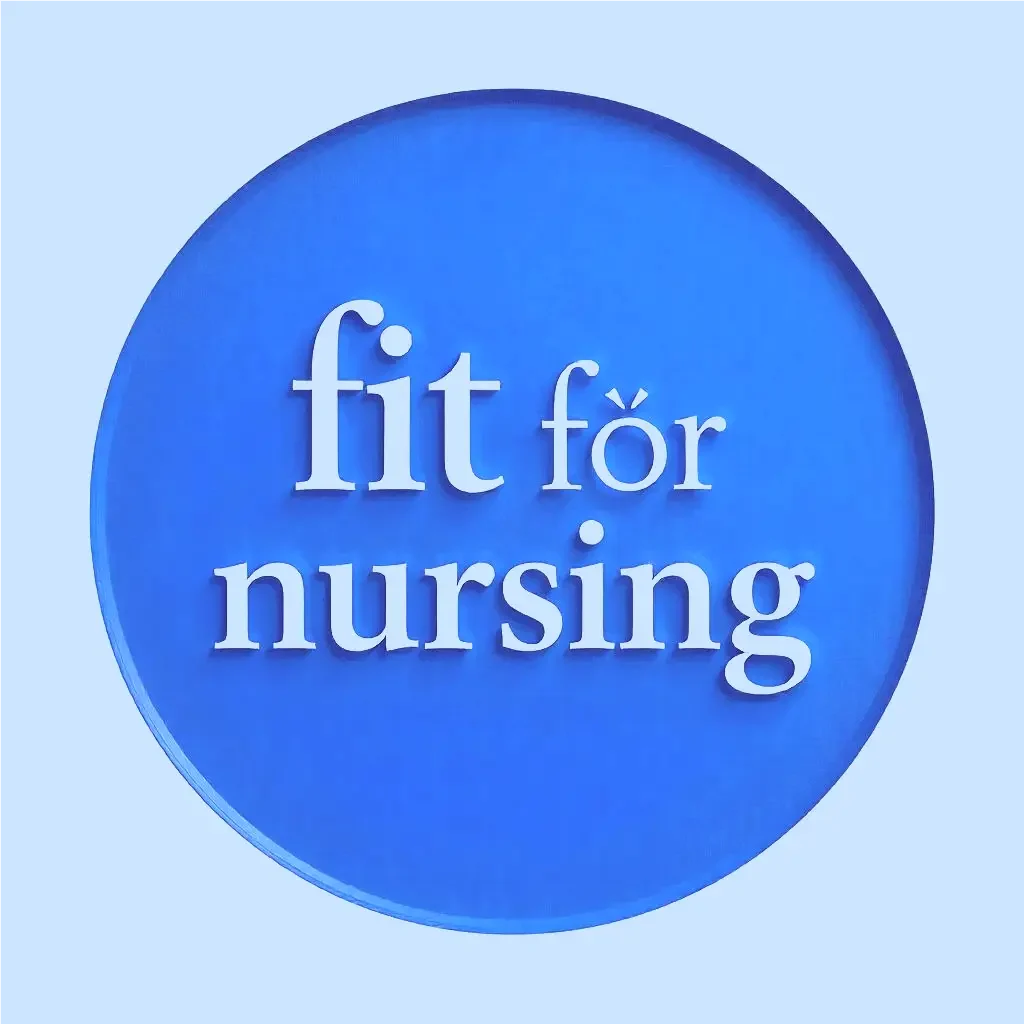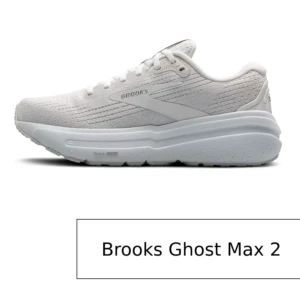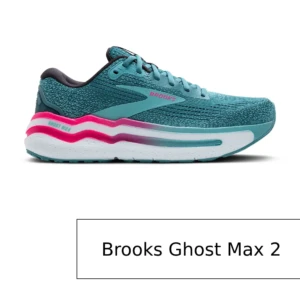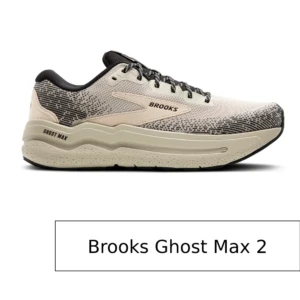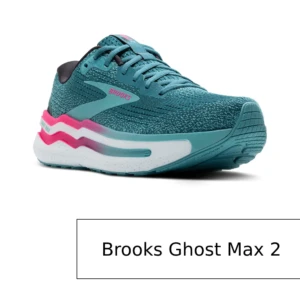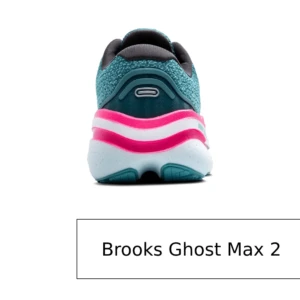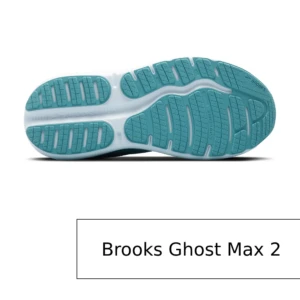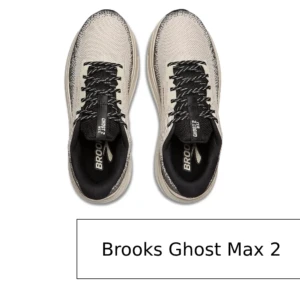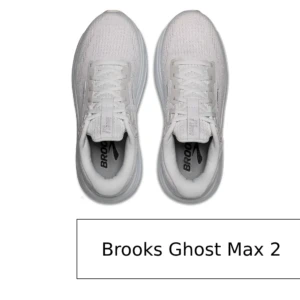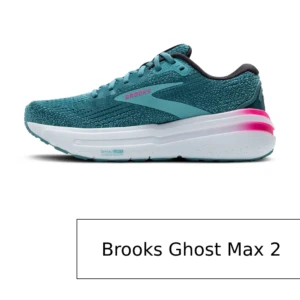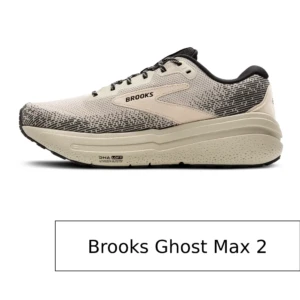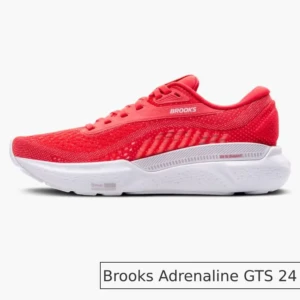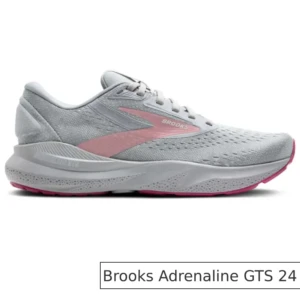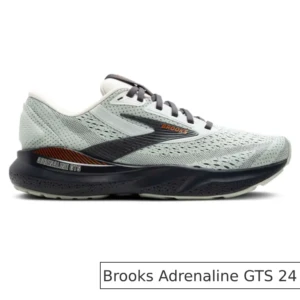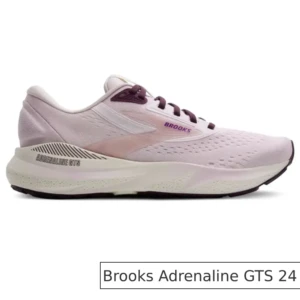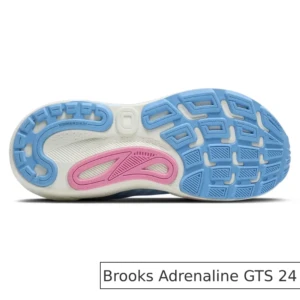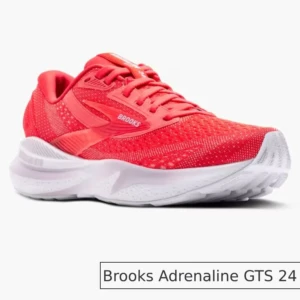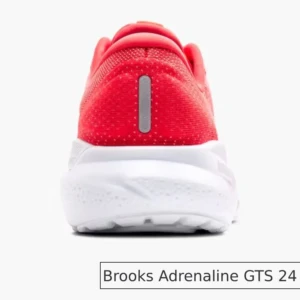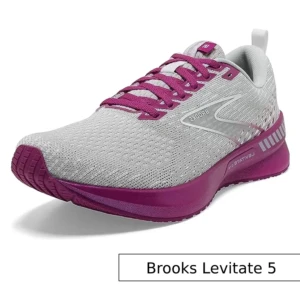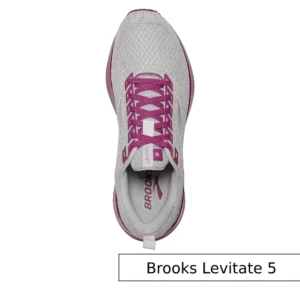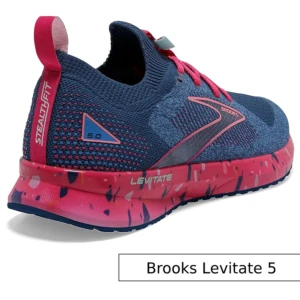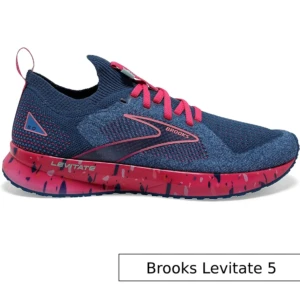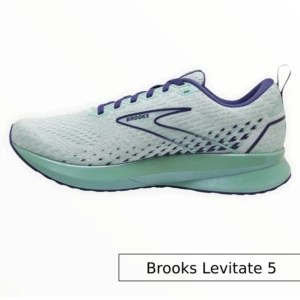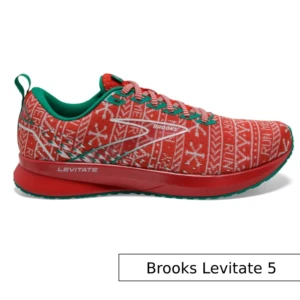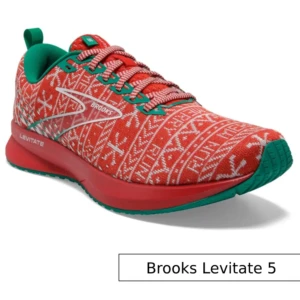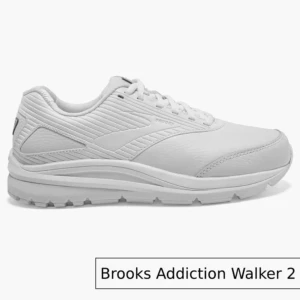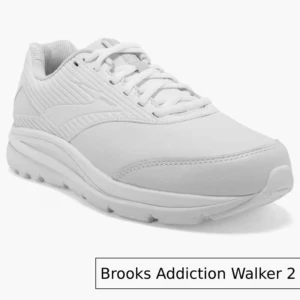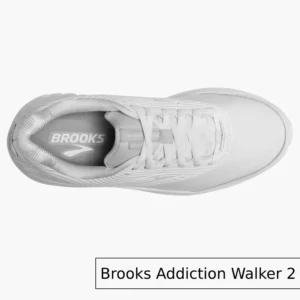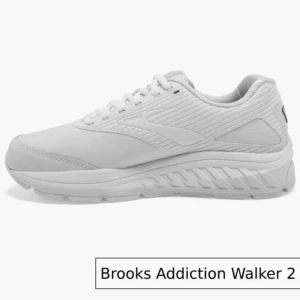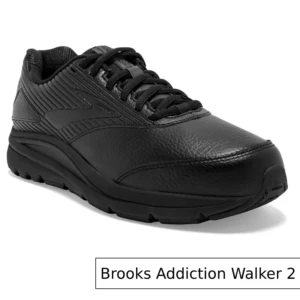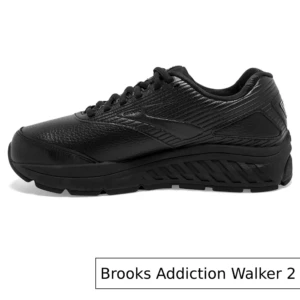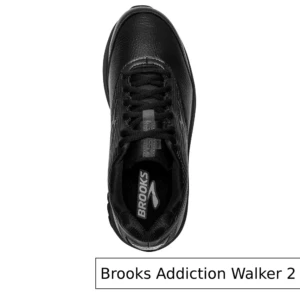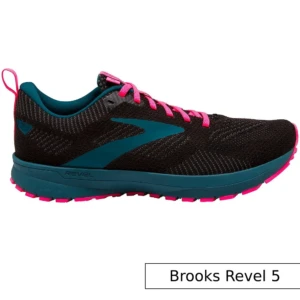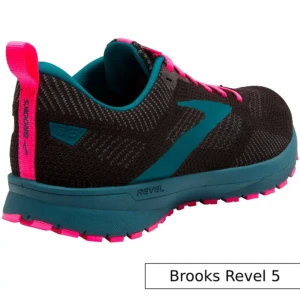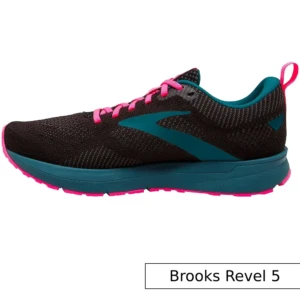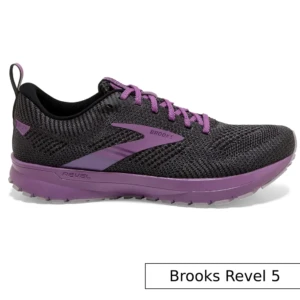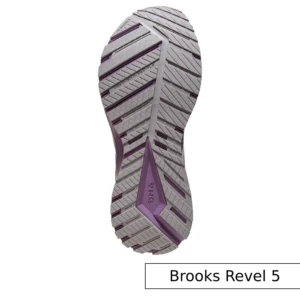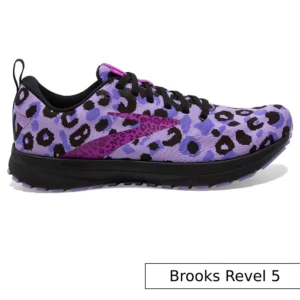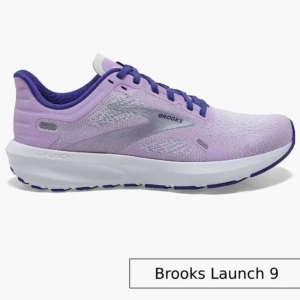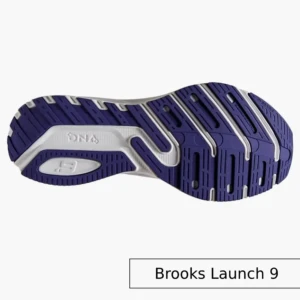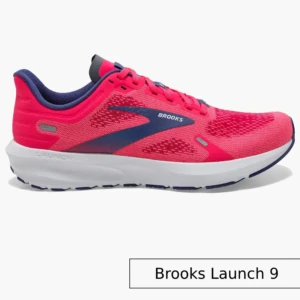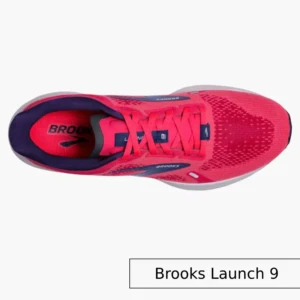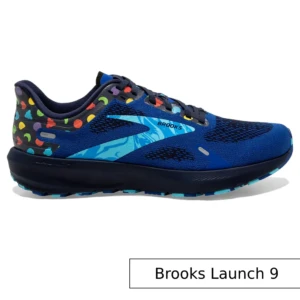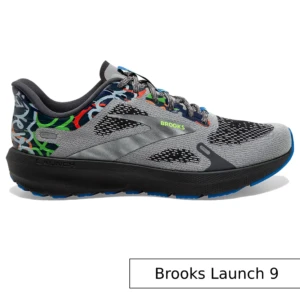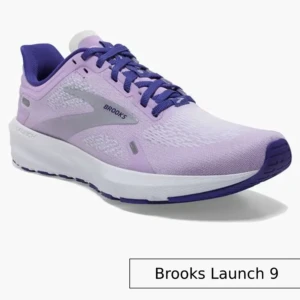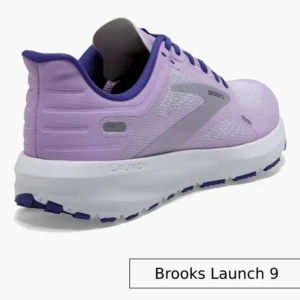Nurses require shoes that provide comfort, support, and durability for long shifts. This article reviews the best Brooks shoes for nurses, focusing on key features that meet these needs. The right Brooks shoes can help alleviate foot pain during long shifts.
Contents
- 1 Key Takeaways
- 2 The Importance of Choosing the Right Nursing Shoes
- 3 What to Look for in Nursing Shoes
- 4 Brooks Ghost Max 2: Superior Cushioning and Stability
- 5 Brooks Adrenaline GTS 24: Best for Supportive Fit
- 6 Lightweight Options: Brooks Levitate 5
- 7 Slip-Resistant Styles: Brooks Addiction Walker 2
- 8 Budget-Friendly Option: Brooks Revel 5
- 9 Breathability and Comfort: Brooks Launch 9
- 10 Athletic Shoes for Nursing: A Great Option
- 11 Compression Socks: Essential for Nurses
- 12 When to Replace Your Brooks Nursing Shoes
- 13 Finding Your Perfect Fit with Brooks Shoe Finder
- 14 Additional Support: Orthotics and Inserts
- 15 Tips for Maintaining Your Brooks Nursing Shoes
- 16 Summary
- 17 Frequently Asked Questions
- 17.1 How often should I replace my Brooks nursing shoes?
- 17.2 What are the best Brooks shoes for nurses with over-pronation issues?
- 17.3 Why are slip-resistant shoes important for nurses?
- 17.4 What makes Brooks Levitate 5 a great choice for nurses?
- 17.5 How can I find the perfect fit for my Brooks shoes?
Key Takeaways
Choosing the right nursing shoes, like Brooks, is essential for comfort, support, and preventing health issues during long shifts.
Models like Brooks Ghost Max 2 and Adrenaline GTS 24 offer excellent cushioning, shock absorption, stability, and support tailored for nurses’ demanding environments.
Regular shoe replacement, proper fit, and using tools like the Brooks Shoe Finder are key to maintaining foot health and performance on the job.
The Importance of Choosing the Right Nursing Shoes

Selecting appropriate footwear is crucial for both comfort and health. Poor shoe choices can lead to issues like heel pain and foot fatigue. Poor shoe choices often result in musculoskeletal disorders and chronic pain, common issues among nurses. Supportive shoes help prevent fatigue and foot fatigue, enabling effective performance during long shifts. The right shoes can mean the difference between a comfortable end to your day or a painful one.
Brooks nursing shoes are celebrated for their comfort, support, stability, and slip-resistant outsoles, which are ideal for medical professionals. With healthcare professionals in mind, Brooks designs stylish footwear that enhances both performance and health. Slip-resistant outsoles, for example, improve stability and safety in demanding healthcare settings.
Considering both size and fit is essential when selecting nursing shoes. A well-fitting shoe promotes foot health and enhances work performance, allowing for comfortable and swift movement throughout the day. Whether opting for lightweight designs or supportive athletic shoes, the right pair can significantly improve your work experience.
What to Look for in Nursing Shoes
When it comes to choosing the right nursing shoes, several key factors can make a significant difference in your comfort and performance during long hours on your feet. First and foremost, prioritize shoes that offer excellent arch support and cushioning. This is crucial for reducing foot fatigue and discomfort, especially during those marathon shifts.
A wide-toe box and a comfortable fit are also essential. These features help prevent blisters and pressure points, ensuring your feet remain comfortable throughout the day. Additionally, consider the shoe’s material. Opt for breathable materials like mesh or leather, which help keep your feet cool and dry, even during the most hectic shifts.
The style of the shoe, while not the top priority, still matters. Choose a professional-looking shoe that you feel comfortable wearing. Finally, support and stability are non-negotiable. Look for shoes with slip-resistant outsoles and a sturdy heel counter to help prevent slips and falls, ensuring you can move quickly and safely in your demanding work environment.
Brooks Ghost Max 2: Superior Cushioning and Stability
Nurses typically walk four to six miles during a 12-hour shift, so comfortable shoes are a necessity. The Brooks Ghost Max 2 excels with superior cushioning and stability, ensuring smooth and comfortable movement. The superior cushioning and stability of the Brooks Ghost Max 2 can help alleviate heel pain during long shifts. Each step is cushioned, providing consistent support from the start to the end of your shift.
The Ghost Max 2 includes features tailored specifically for nurses. It combines excellent cushioning with the stability needed for demanding shifts. Brooks running technology ensures these shoes offer reliable support throughout your busy day.
Key Features of Brooks Ghost Max 2
The Ghost Max 2 uses DNA Loft v3 foam for enhanced energy return, shock absorption, and a firm feel, making each step cushioned and responsive. This design helps reduce fatigue during long periods of standing and walking. A heel stack height of 39.0 mm adds extra cushioning for heel strikers.
The shoe’s heel counter stiffness, rated 4 out of 5, offers strong heel support, crucial for stability. With a forefoot stack height of 29.1 mm and a toebox width of 96.5 mm, the Ghost Max 2 accommodates various foot shapes comfortably.
These features make the Ghost Max 2 an outstanding option for nurses needing superior cushioning and stability.
Brooks Adrenaline GTS 24: Best for Supportive Fit
The Brooks Adrenaline GTS 24 is one of the best shoes for a blend of cushioning and stability. Nurses favor this shoe for its supportive fit, ideal for long shifts. The Adrenaline GTS 24 includes a Guiderail support system to manage excessive foot movement and reduce foot fatigue, making it suitable for those with over-pronation issues.
The midsole uses DNA LOFT V3 foam for enhanced comfort and responsiveness, making long periods on your feet more bearable. Good footwear like the Adrenaline GTS 24 helps prevent long-term issues like plantar fasciitis and joint problems, making it a wise health investment.
Benefits of Brooks Adrenaline GTS 24
A key feature of the Adrenaline GTS 24 is the GuideRails support system, which keeps your foot aligned and enhances comfort. This arch support reduces fatigue, provides shock absorption, and absorbs impacts, essential for nurses who stand or walk for long hours. Durable materials in its construction ensure longevity, withstanding the rigors of nursing shifts.
The Adrenaline GTS 24 has multiple width options, accommodating various foot sizes. With features like shock-absorbing insoles and a stable fit, this model enhances comfort and support, making it ideal for long shifts.
Lightweight Options: Brooks Levitate 5
The Brooks Levitate 5 is an excellent option if you prioritize a lightweight shoe. Its design facilitates quick and effortless movement during shifts. At approximately 10.4 oz for men’s sizes, the Levitate 5 ensures you won’t feel weighed down, even after hours on your feet.
With a medium width that accommodates various foot shapes, the Levitate 5 suits a wide range of users, including those with wide feet. It minimizes foot fatigue and offers a comfortable fit, proving that lightweight shoes can still provide substantial support and comfort.
What Makes Brooks Levitate 5 a Great Choice?
The Levitate 5 features DNA AMP cushioning technology, providing shock absorption, a responsive and energetic ride that enhances comfort over long shifts. Its fit knit upper offers a secure, adaptive fit, keeping your feet comfortable all day.
Available in two upper styles—structured mesh and flexible knit—the Levitate 5 adapts to your needs. An updated design with an arrow-point pattern on the outsole promotes efficient transitions and quicker toe-offs, making it a game-changer for nurses.
Slip-Resistant Styles: Brooks Addiction Walker 2
Slip-resistant footwear is crucial for nurses to prevent accidents on slippery hospital floors. The Brooks Addiction Walker 2 features a specialized slip-resistant outsole, enhancing stability on various surfaces and ensuring safety in demanding healthcare environments.
Selecting the right slip-resistant shoe is critical for safety, and the Brooks Addiction Walker 2 excels in this area. Its robust design and slip-resistant features provide the stability and security needed in fast-paced, high-risk environments while also reducing foot fatigue.
Why Choose Brooks Addiction Walker 2?
The Brooks Addiction Walker 2’s key feature is the Extended Progressive Diagonal Rollbar, which supports natural foot motion and reduces slipping risks. Its slip-resistant outsole provides traction on various surfaces, ensuring safety in demanding healthcare environments.
The shoe also provides plush cushioning with excellent shock absorption, enhancing comfort and reducing fatigue during long shifts. Combining safety features and comfort, the Brooks Addiction Walker 2 is a top choice for nurses.
Budget-Friendly Option: Brooks Revel 5
For a budget-friendly option that doesn’t compromise on comfort and support, consider the Brooks Revel 5. Its soft, responsive cushioning system effectively absorbs impact and reduces foot fatigue, making it ideal for long hours on your feet. The breathable upper mesh enhances airflow, keeping your feet cool and comfortable during demanding shifts.
The lightweight design of the Revel 5 facilitates easier movement and reduces fatigue during extended wear. A durable rubber outsole provides excellent traction, perfect for navigating slippery hospital floors.
Breathability and Comfort: Brooks Launch 9
The Brooks Launch 9 excels in breathability and comfort, making it a favorite among nurses. Its breathable mesh upper keeps feet dry and comfortable during long shifts. The Creel Warp mesh upper is optimized for exceptional airflow and a lightweight design, ensuring your feet remain cool.
With a 5 out of 5 breathability rating, the Launch 9 ensures excellent airflow through its engineered mesh upper. BioMoGo DNA cushioning offers a responsive and bouncy feel, is ideal for extended use, and reduces foot fatigue.
Athletic Shoes for Nursing: A Great Option

Athletic shoes are an excellent choice for nursing, offering the perfect blend of support, cushioning, and durability. Designed for high-impact activities like running and jumping, these shoes are well-suited to the physical demands of nursing. They often feature a more substantial sole and a supportive upper, providing the additional support and stability needed for long hours on your feet.
One of the best aspects of athletic shoes is their variety. From sleek and stylish to bold and colorful, there’s an athletic shoe to match every nurse’s personal style. Many athletic shoes are specifically designed for women, catering to the unique needs of female nurses.
Brands like Brooks, ASICS, and New Balance are popular choices among nurses. These brands offer a wide range of styles, from supportive and stable to lightweight and flexible. With many models designed specifically for nursing, it’s easy to find a shoe that meets your needs for additional support and comfort during those long shifts.
Compression Socks: Essential for Nurses
Compression socks are vital for nurses, increasing blood flow, reducing foot fatigue, and decreasing muscle discomfort. Compression levels of 15-20 mmHg or 20-30 mmHg are recommended for prolonged standing.
Cotton socks with 15 mmHg compression make a good starting choice. Knee-high compression socks are popular among nurses for their comfort and ease of use.
When to Replace Your Brooks Nursing Shoes
Replacing nursing shoes regularly is crucial for foot health. Nurses should consider new shoes every 350 to 500 miles, roughly every six months. Signs for replacement include discomfort, reduced outsole grip, visible damage like rips or cracks, and foot fatigue.
Wear and tear from walking and standing degrade nursing shoes faster than running shoes due to constant pressure. Regularly checking for signs of wear can help prevent foot pain and related issues.
Finding Your Perfect Fit with Brooks Shoe Finder
The Brooks Shoe Finder tool simplifies finding the perfect fit for nursing shoes. This online tool identifies ideal footwear for your specific needs and foot characteristics in under five minutes. By entering detailed foot information, the Shoe Finder customizes suggestions based on preferences like training type and foot stability.
The Brooks Shoe Finder is a valuable resource, ensuring nurses find the right shoes to support them through demanding shifts and reduce foot fatigue.
Additional Support: Orthotics and Inserts
Custom orthotic insoles offer crucial stability for those needing extra support, alleviating common foot ailments like plantar fasciitis, flat feet, and foot fatigue. Unlike mass-produced inserts, custom orthotics are tailored to individual foot structure and medical issues.
Rigid orthotics control foot motion and reduce leg and lower back pain by addressing abnormal foot function. Soft orthotics offer shock absorption and relief for conditions like arthritis, which suits those experiencing discomfort.
Tips for Maintaining Your Brooks Nursing Shoes
Proper maintenance is essential for the longevity and performance of your Brooks nursing shoes. Avoid machine washing to prevent material and structural damage. Instead, clean the uppers with mild detergent and a damp cloth or brush.
Remove and clean insoles separately to reduce odors. Stuff shoes with newspaper after cleaning to maintain shape and speed up drying. Regular cleaning is advised when shoes feel heavy or emit unpleasant smells. Proper maintenance can also help prevent foot fatigue, ensuring your comfort throughout long shifts.
Summary
Choosing the right pair of nursing shoes can significantly impact your workday, enhancing comfort, preventing foot fatigue, and avoiding other health issues. Brooks offers a range of options tailored to meet the specific needs of nurses, from superior cushioning to slip-resistant soles. Investing in a good pair of shoes is investing in your health and job performance.
Remember to replace your shoes regularly, maintain them properly, and consider additional support like orthotics if needed. You can easily and confidently tackle even the most extended shifts with proper footwear.
Frequently Asked Questions
How often should I replace my Brooks nursing shoes?
If you work three shifts a week, you should replace your Brooks nursing shoes every 350 to 500 miles, about every 6 to 7 months. Keeping them fresh is key for your comfort on the job!
What are the best Brooks shoes for nurses with over-pronation issues?
The Brooks Adrenaline GTS 24 is perfect for nurses dealing with over-pronation, thanks to its Guiderail support system that keeps your feet stable. You’ll definitely feel the difference during those long shifts!
Why are slip-resistant shoes important for nurses?
Slip-resistant shoes are key for nurses because they protect against falls on slippery floors, keeping them safe in hectic healthcare settings. It’s all about staying upright and focused on patient care!
What makes Brooks Levitate 5 a great choice for nurses?
The Brooks Levitate 5 is an awesome pick for nurses because it’s super lightweight and has impressive DNA AMP cushioning that gives you great energy return. Plus, the fit knit upper hugs your foot for a comfy, secure feel during those long shifts!
How can I find the perfect fit for my Brooks shoes?
To find the perfect fit for your Brooks shoes, try using the Brooks Shoe Finder tool, which tailors recommendations based on your specific preferences and foot shape. It’s a great way to ensure you get the right shoes for your needs!
